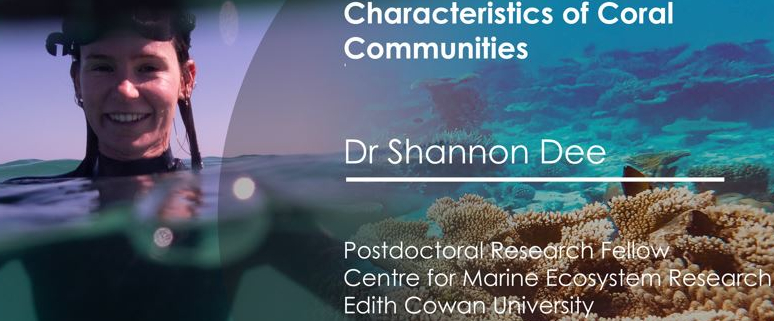The varied life of coral reefs: from warm and tropical to arctic depths
The popular image of coral reefs is colourful life forms, in clear, tropical water. But marine scientist Dr Shannon Dee said some exist in chilly Arctic seas and others thrive in warm, turbid water where there is limited visibility. Finding out more about the many types of coral reefs could improve understanding of reef vulnerabilities and resilience under climate change.
Dr Dee, from Edith Cowan University, gave her presentation ‘Characteristics of coral communities’ as part of WAMSI’s Thinking Blue school outreach program.
The scientist, whose career has included working on a bull shark aid project in Fiji, a tourist vessel in Queensland and with an environmental consultancy, said the ‘Hollywood’ image of coral reefs only represented one element of what were varied ecosystems.
“Coral reefs are architectural and biological masterpieces,” Dr Dee said.
“Corals, which are animals, are critical for biodiversity, they are a source of food and medicine around the world, and coral reefs help with flood protection in low lying coastal areas.”
Dr Dee has undertaken most of her research on turbid reefs. Exmouth Gulf, in Western Australia, was one example of a turbid reef site and an area where fine sediment gets resuspended or flushed on to the reef by tides.
Other coral systems include Arctic and mesophotic (low light) reefs, such as the 350 metre deep Røst Reef in Norway and temperate reefs including those off Perth and WA’s south coast.
Dr Dee said one of the biggest threats to corals globally was from climate change along with disease, pollution, cyclones and the crown of thorns starfish.
“Corals will be stressed when waters rise above their thermal limits. They then start expelling zooxanthellae, the symbiotic photosynthetic algae within them, which then makes the coral turn white.”
Coral polyps are clear but algae within them gives them their colour.
“At this stage the corals are alive but starving, as the algae aids in coral digestion and nutrient take up”
“If this continues the coral will die.”
“Even if corals survive a bleaching event, the skeleton is more fragile, and the coral may be more susceptible to bleaching in the future.”
“Branching corals can be more susceptible to bleaching.”
Dr Dee said turbid reefs were usually covered in slow growing corals which were generally more stress tolerant.
“Some may be more resilient in the future.”
Dr Dee said there were some simple ways everyone could help protect corals: Don’t touch or step on them, use sunscreen that doesn’t contain ingredients that harm corals and eat seafood that is sustainably caught.
Dr Shannon Dee’s presentation: Characteristics of coral communities is available to view on WAMSI’s YouTube channel.

